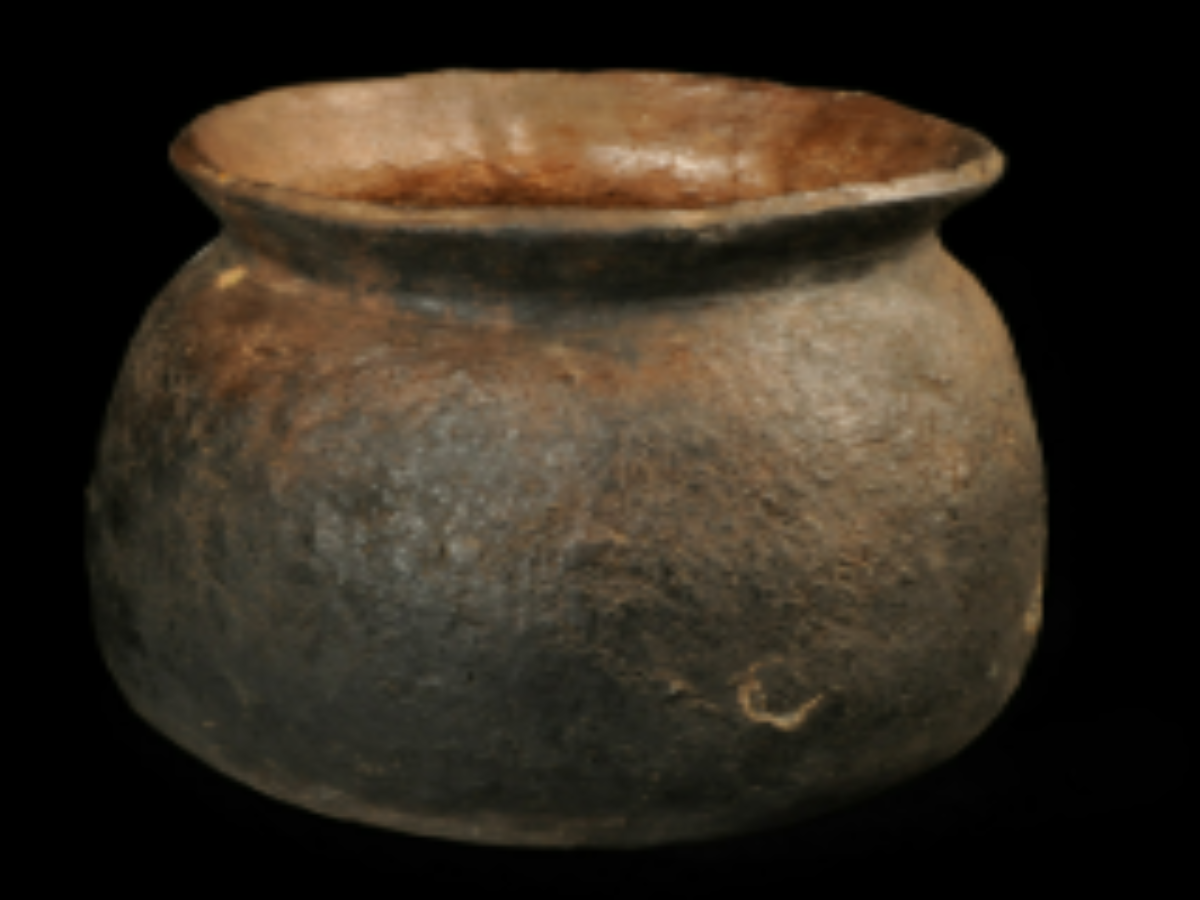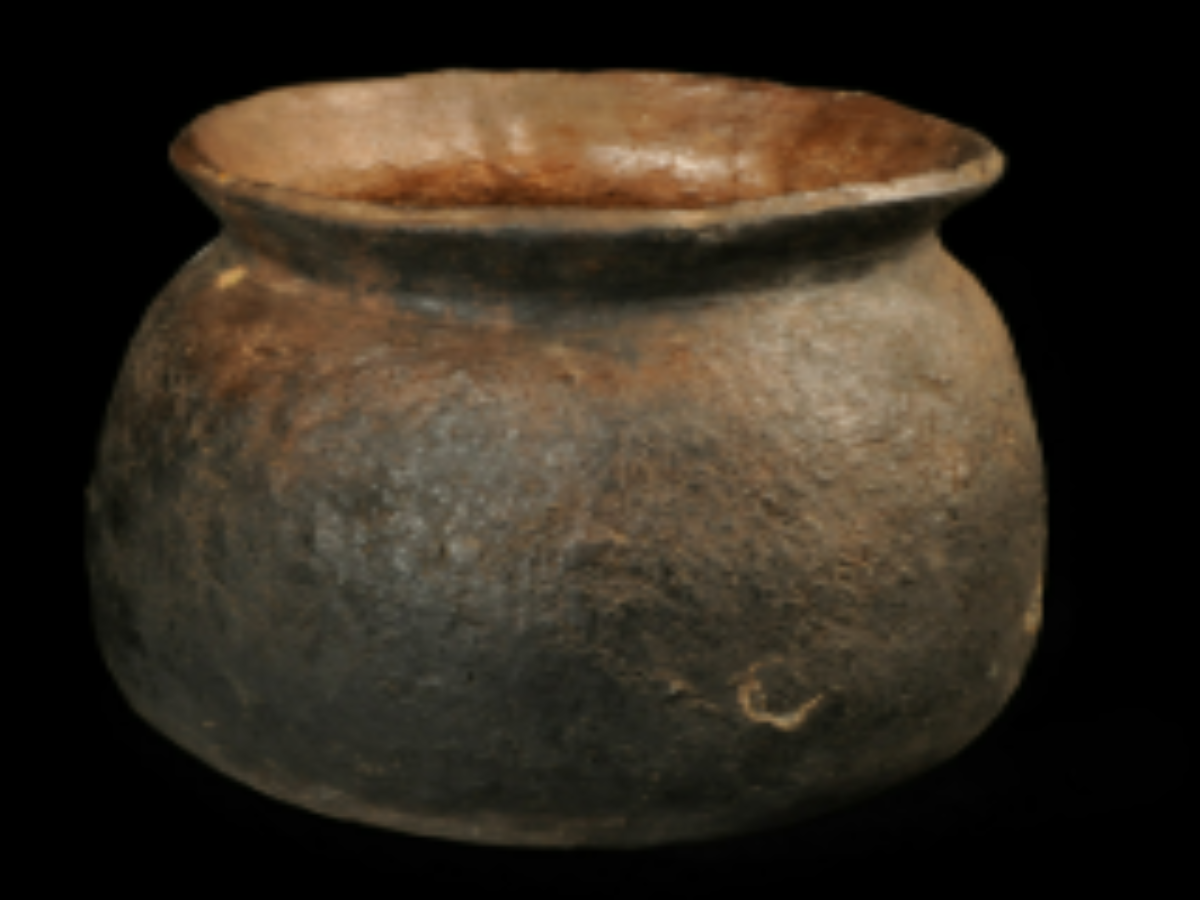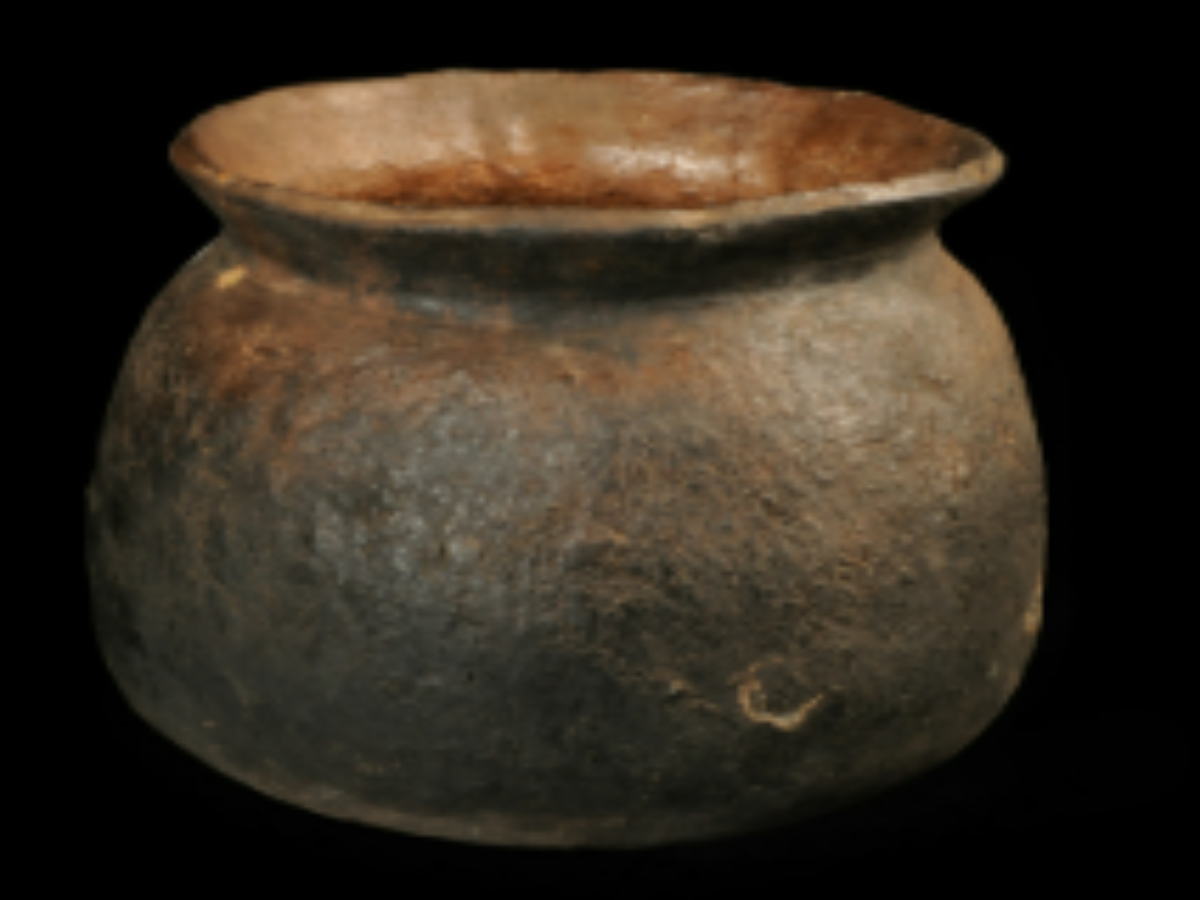State
Tribe Name
Art Type
short description
The blackish-brown earthen pot is a traditional handmade cooking vessel belonging to the Angami Naga tribe, one of the major Naga communities of Kohima district, Nagaland, India. The Angami people's rich cultural heritage, their sustainability practice, and artisan creativity are seen especially in wood, bamboo, and clay. This earthen pot is made from local clay and handcrafted. Open or semi-covered firing kiln has been inherited from father to son. The body of the pot is bulbous, which helps in uniform distribution of heat while cooking, while the rim is flat, thus easily lending itself to the handling or placement of covers made from leaves or metal plates. The blackish-brown coloration is due to the traditional firing process, where the pot is fired with flame and smoke, giving it as much aesthetic charm as added heat-resistance properties.
Thumbnail

Filter Postion
Left
Filter Background
Off
Theme
Filter Header Image

content
Image

description
The blackish-brown earthen pot is a traditional handmade cooking vessel belonging to the Angami Naga tribe, one of the major Naga communities of Kohima district, Nagaland, India. The Angami people's rich cultural heritage, their sustainability practice, and artisan creativity are seen especially in wood, bamboo, and clay. This earthen pot is made from local clay and handcrafted. Open or semi-covered firing kiln has been inherited from father to son. The body of the pot is bulbous, which helps in uniform distribution of heat while cooking, while the rim is flat, thus easily lending itself to the handling or placement of covers made from leaves or metal plates. The blackish-brown coloration is due to the traditional firing process, where the pot is fired with flame and smoke, giving it as much aesthetic charm as added heat-resistance properties.
At Angami homes, one finds such a pot in which many traditional dishes are prepared - stews, smoked meat, fermented vegetable curries, porridge, and rice. The porous clay allows slow and flavorful cooking, an important aspect of Naga cuisine. This cooking pot represents not merely a tool in the kitchen but speaks volumes in the identity of the cuisine and the ecological ethos of the tribe. Nowadays, examples of these pots are kept in the museum, like in Indian Museum, Kolkata, which shows a peek into the material culture and daily living of the Angami Naga people.
At Angami homes, one finds such a pot in which many traditional dishes are prepared - stews, smoked meat, fermented vegetable curries, porridge, and rice. The porous clay allows slow and flavorful cooking, an important aspect of Naga cuisine. This cooking pot represents not merely a tool in the kitchen but speaks volumes in the identity of the cuisine and the ecological ethos of the tribe. Nowadays, examples of these pots are kept in the museum, like in Indian Museum, Kolkata, which shows a peek into the material culture and daily living of the Angami Naga people.
Image Mode
landscape
promoted
On
Verified
Off
